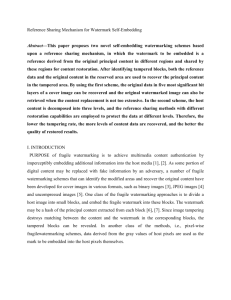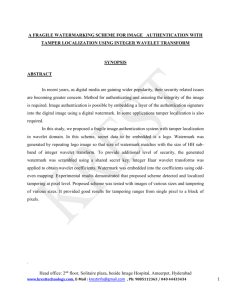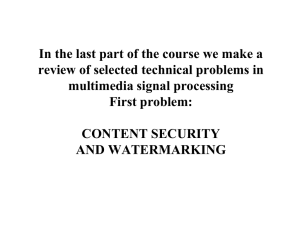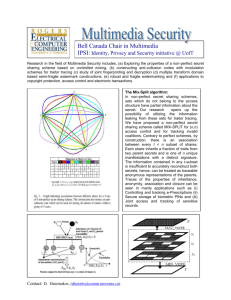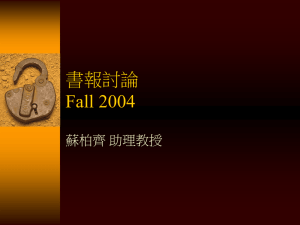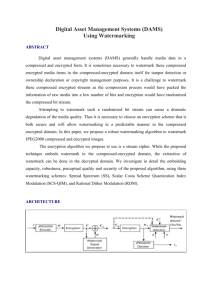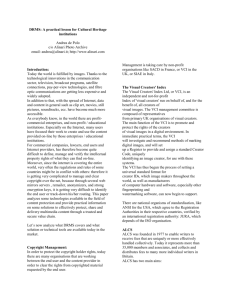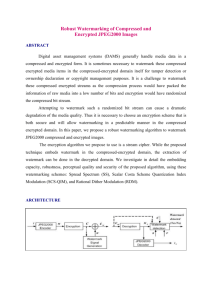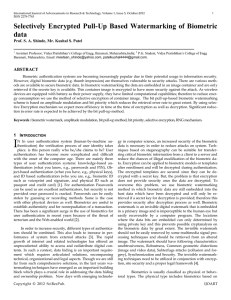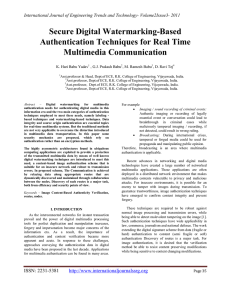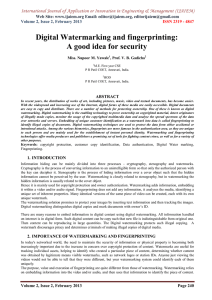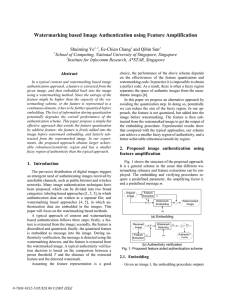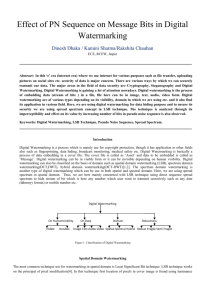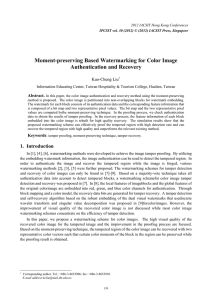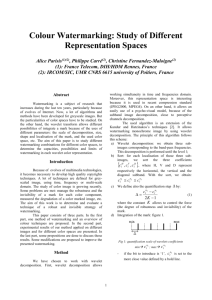Abstract - Best IEEE Projects
advertisement
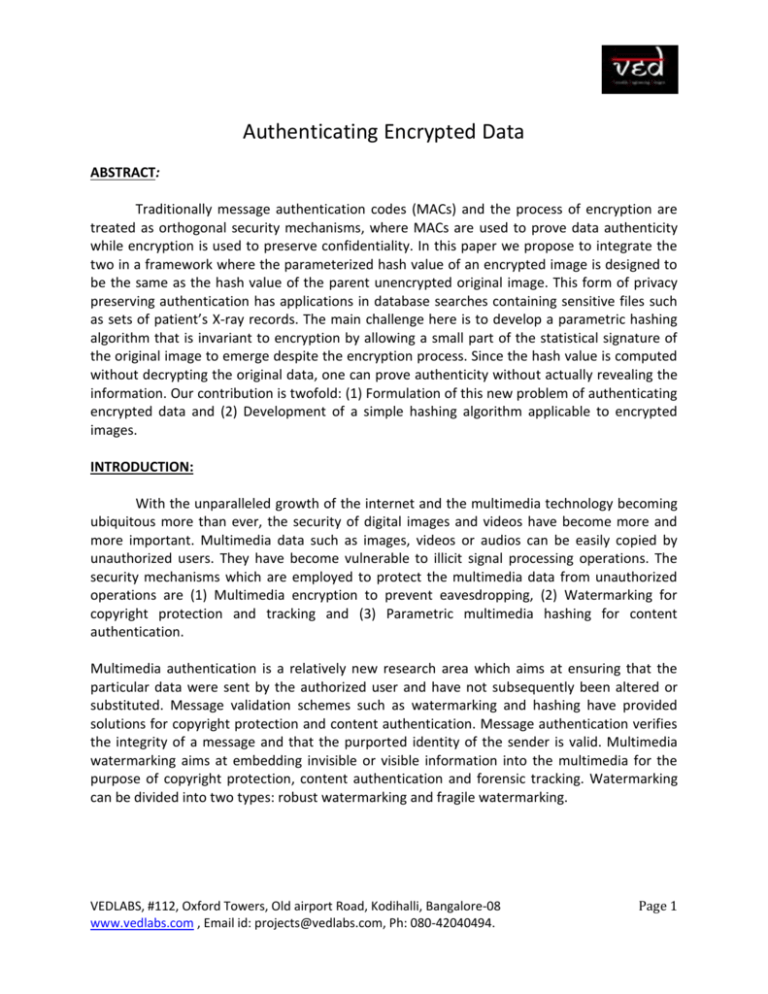
Authenticating Encrypted Data ABSTRACT: Traditionally message authentication codes (MACs) and the process of encryption are treated as orthogonal security mechanisms, where MACs are used to prove data authenticity while encryption is used to preserve confidentiality. In this paper we propose to integrate the two in a framework where the parameterized hash value of an encrypted image is designed to be the same as the hash value of the parent unencrypted original image. This form of privacy preserving authentication has applications in database searches containing sensitive files such as sets of patient’s X-ray records. The main challenge here is to develop a parametric hashing algorithm that is invariant to encryption by allowing a small part of the statistical signature of the original image to emerge despite the encryption process. Since the hash value is computed without decrypting the original data, one can prove authenticity without actually revealing the information. Our contribution is twofold: (1) Formulation of this new problem of authenticating encrypted data and (2) Development of a simple hashing algorithm applicable to encrypted images. INTRODUCTION: With the unparalleled growth of the internet and the multimedia technology becoming ubiquitous more than ever, the security of digital images and videos have become more and more important. Multimedia data such as images, videos or audios can be easily copied by unauthorized users. They have become vulnerable to illicit signal processing operations. The security mechanisms which are employed to protect the multimedia data from unauthorized operations are (1) Multimedia encryption to prevent eavesdropping, (2) Watermarking for copyright protection and tracking and (3) Parametric multimedia hashing for content authentication. Multimedia authentication is a relatively new research area which aims at ensuring that the particular data were sent by the authorized user and have not subsequently been altered or substituted. Message validation schemes such as watermarking and hashing have provided solutions for copyright protection and content authentication. Message authentication verifies the integrity of a message and that the purported identity of the sender is valid. Multimedia watermarking aims at embedding invisible or visible information into the multimedia for the purpose of copyright protection, content authentication and forensic tracking. Watermarking can be divided into two types: robust watermarking and fragile watermarking. VEDLABS, #112, Oxford Towers, Old airport Road, Kodihalli, Bangalore-08 www.vedlabs.com , Email id: projects@vedlabs.com, Ph: 080-42040494. Page 1 BLOCK DIAGRAM: HARDWARE AND SOFTWARE REQUIREMENTS: Software Requirement Specification: Operating System: Windows XP with SP2 Tool: MATLAB R2010, Version: 7.10.0 Hardware Requirement specification: Minimum Intel Pentium IV Processor Primary memory: 2 GB RAM, REFERENCES: [1] I. J. Cox, M. L. Miller, and J. A. Bloom, “Watermarking applications and their properties,” in Proc. Int. Conf. on Information Technology: Coding and Computing, pp. 6–10, March 2000. [2] J. Fridrich, “Image Watermarking for Tamper Detection,” in Proc. ICIP, vol. 2, (Chicago, Illinois), pp. 404–408, Oct 1998. [3] E. T. Lin, C. I. Podilchuk, and E. J. Delp, “Detection of image alterations using semi-fragile watermarks,” in SPIE Intl. Conf. on Security and Watermarking of Multimedia Contents II, Jan 2000. [4] H. Cheng and X. Li, “Partial Encryption of Compressed Images and Videos,” IEEE Transactions on Signal Processing, vol. 48, no. 8, pp. 2439–2451, 2000. [5] S. Lian, “Quasi Commutative Watermarking and Encryption for Secure Media Content Distribution,” Multimedia Tools Appl, Springer, vol. 43, pp. 91–107, 2009. VEDLABS, #112, Oxford Towers, Old airport Road, Kodihalli, Bangalore-08 www.vedlabs.com , Email id: projects@vedlabs.com, Ph: 080-42040494. Page 2

